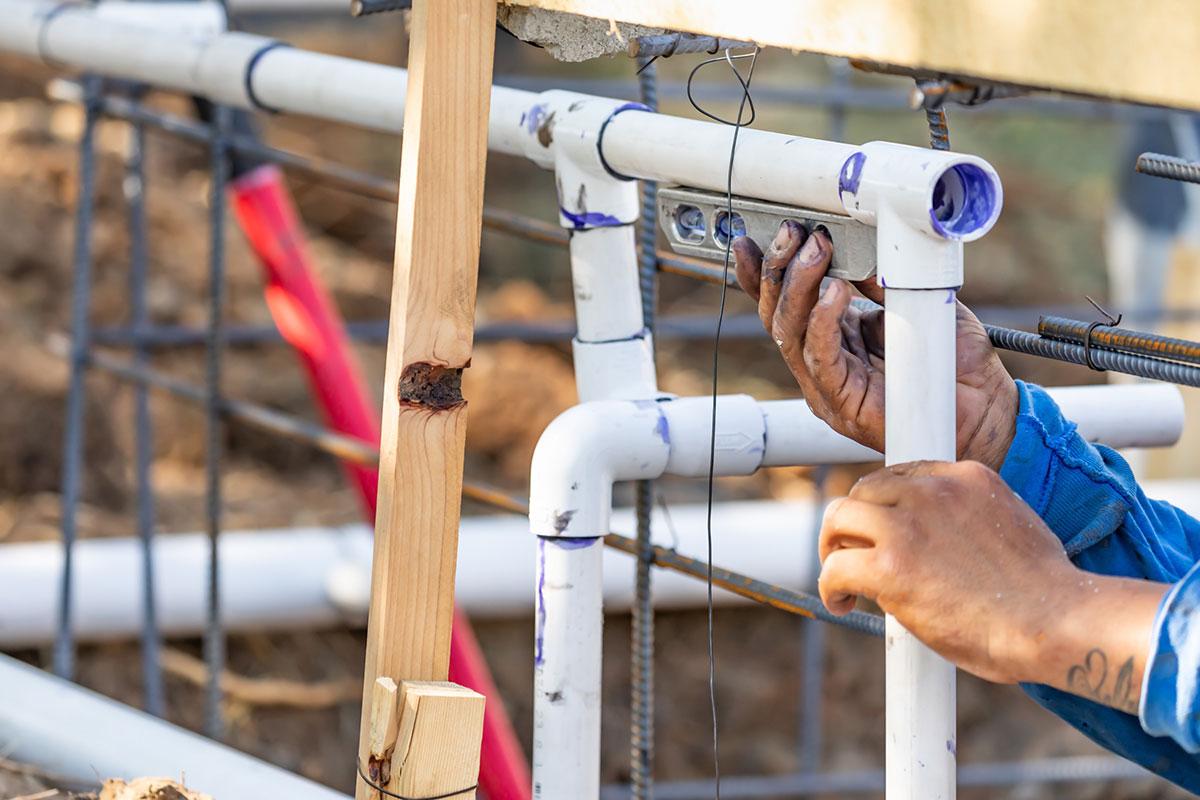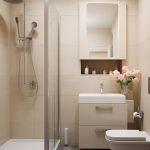When it comes to making the most of your bathroom, a well-chosen vanity unit can truly be a space saviour. Selecting the right vanity unit doesn’t just add a stylish and functional element to your bathroom; it also helps utilize space efficiently and keep everything neat, organized and at hand. With countless options available, making a choice might seem overwhelming. So, let’s discuss 10 essential factors that will help you choose the perfect vanity unit for your plumber to install.
Contents
- 1. Assess Your Bathroom Space
- 2. Decide Storage Requirements
- 3. Choose Material Wisely
- 4. Matching Color Scheme
- 5. Analyze Vanity Usage
- 6. Opt For Practical Designs
- 7. Consider the Vanity’s Shape
- 8. Select Appropriate Vanity Size
- 9. Remember Plumbing Location
- 10. Progressive Installation Process
- 11. Analyze Cost-Benefit Ratio
- 12. Durable Over Fashionable
- 13. Consider Future Bathroom Adjustments
- 14. Take Professional Help
- 15. Read Vanity Unit Reviews
- Conclusion: Making the Final Decision
1. Assess Your Bathroom Space
The first thing you need to do while selecting a vanity unit is gauge the available space in your bathroom. Not every vanity will fit in every bathroom. Oversized vanities can overpower small bathrooms, and too tiny ones may disappear in large bathrooms. Don’t just consider the floor space, but also look at the door opening, allot room for tap and sink water connections, and ensure it won’t block outlets or switches.
2. Decide Storage Requirements
Please remember that vanity units are not just decorative additions but sturdy storage solutions for all your toiletries and bathroom essentials. Hence, understand your storage needs before choosing one. If you have lots of items to store, consider opting for a larger unit with ample cabinet space and drawers. Alternatively, if you only have basic toiletry items, a minimalistic design with less storage might suffice.
3. Choose Material Wisely
Your vanity unit material choice should be durable, waterproof, and able to resist possible water damage. Common vanity materials range from MDF and solid woods to stainless steel and glass. Each one offers distinct aesthetics yet possesses different degrees of durability and water resistance. For instance, solid wood might offer high aesthetic value but may require regular upkeep due to moisture susceptibility.
4. Matching Color Scheme
A vanity unit could easily become the focal point of your bathroom. So, ensuring it matches the overall color scheme is crucial. A clash in colors or design may make the unit stand out strangely. Choose your vanity color based on whether you want to match, compliment or contrast it with your bathroom walls and other fixtures. Custom-painted vanities can help achieve perfect coordination.
5. Analyze Vanity Usage
This is often overlooked, but it’s essential to consider who will use the vanity. If it’s for an adult’s bathroom, a stylish, minimalistic approach is fine. However, if children frequently use the bathroom, a hard-wearing countertop with enough storage for their paraphernalia is essential. Also, if more than one person uses the bathroom simultaneously, a double sink vanity might be necessary.
6. Opt For Practical Designs
While it’s easy to get carried away by attractive designs, don’t forget practicality. Look for features like adjustable shelves, slow-close doors to prevent slamming, and a sturdy frame that can bear weight. Consider installing a wall-mounted vanity unit if space is tight. They free up floor space and offer ease-of-cleaning opportunities.
7. Consider the Vanity’s Shape
From square and rectangular to oval and round, vanity units come in various shapes that impact aesthetics and function. Square or rectangular vanities typically offer more cabinet space and countertop area but may have sharp corners that could be troublesome in tight spaces or for kids. Round or oval ones appear softer and smoother but may offer less storage area.
8. Select Appropriate Vanity Size
The size of the vanity unit should be commensurate with your bathroom size. An oversized vanity could disrupt the traffic flow within the bathroom, whereas a too-small unit may not meet your storage needs. Also, consider countertop size. It must provide enough area to arrange your frequently used essentials but should not intrude upon the toilet or shower space.
9. Remember Plumbing Location

Plumbing considerations and its location in your bathroom are indeed critical factors to consider while choosing a vanity unit. If you opt for a vanity with drawers, make sure the plumbing doesn’t interfere with the drawers. Also, moving plumbing lines to accommodate a larger vanity could lead to unnecessary expenses and complications.
10. Progressive Installation Process
Lastly, the installation process should ideally be smooth and progressive, avoiding emergencies and repairs down the line. Engage a professional plumber properly familiarized with building regulations and best practices in bathroom construction. An experienced plumber can ensure correct vanity placement without interfering with other bathroom elements like lights, doorways, and shower stalls.
11. Analyze Cost-Benefit Ratio
Value for money is crucial when choosing furniture for your home. Start the cost-benefit analysis of your vanity unit by evaluating the quality, material, size and features it offers compared to its price point. Don’t forget to factor in expenses related to plumbing, installation charges and other hardware costs in your money-value calculus. For instance, if the unit includes a pre-installed sink or tap (valve), it might be more cost effective than purchasing these items separately. Always remember that higher initial investment in a quality vanity unit may save you from future emergency repairs or untimely replacements.
12. Durable Over Fashionable

Bathroom furniture is subjected to high humidity levels and daily wear-tear. Hence, durability should be given prominence over style when picking out your vanity unit. Choose materials proven to withstand water damage like stainless steel or ceramics for the sink. For cabinetry, opt for wood species such as oak or teak or man-made materials like PVC that resist warping and rusting. Pay attention to construction details—the sturdier the joints, door hinges and drawer slides, the longer vanity will last.
13. Consider Future Bathroom Adjustments
Bathrooms are often one of the most redesigned spaces in homes. When selecting a vanity, take into account your future renovation or alteration plans. Ensure that the chosen vanity does not impede any architectural adjustments or building engineering plans you may have for your bathroom’s future layout. For example, an oversized countertop can make it difficult to install a second toilet or change your bathtub’s location later on.
14. Take Professional Help
You might be tempted to DIY everything, but don’t overlook the importance of professional help in bathroom construction matters. Consult your plumber or a building engineering specialist before making any significant decisions. Professionals can provide precise measurements, offer installation advice, and highlight potential plumbing issues you might overlook. Remember that the goal is to balance the design aesthetics with functional convenience and efficient use of space.
15. Read Vanity Unit Reviews
Product reviews often provide valuable insights and honest feedback from previous customers. They can aid you in understanding the real-life performance of a unit better than descriptions provided by manufacturers. Check reviews for complaints about durability, ease of installation, user satisfaction, and any common issues users encountered. Reviews might also offer information about aspects like door sound, drawer handle comfort, countertop staining that can affect your long term satisfaction with the product.
Conclusion: Making the Final Decision
In finalizing your vanity unit choice, seek a balance between aesthetics, functionality, durability, and pricing. Involve professionals such as plumbers and civil engineers to avoid serious inconveniences and emergency situations down the line. The perfect vanity isn’t just a focal point of your bathroom decor—it’s a testament to smart decision-making that adds value to your home.
- Clean & Green: Eco-Friendly Cleaning Tips for Your Plumbing Fixtures - October 8, 2024
- Classic to Contemporary: Choosing the Perfect Toilet Suite for your new Bathroom Design - September 19, 2024
- Chlorine Conundrum: The Benefits of a Water Filters in Your Sydney Bathroom - August 28, 2024
Related posts:
 Storage Secrets: Maximising Space in Your Bathroom Vanity
Storage Secrets: Maximising Space in Your Bathroom Vanity
 Before & After Bliss: Transforming Your Tired Looking Bathroom with a New Vanity
Before & After Bliss: Transforming Your Tired Looking Bathroom with a New Vanity
 10 Clever Storage Hacks to Maximize Your Tiny Bathroom Space
10 Clever Storage Hacks to Maximize Your Tiny Bathroom Space
 From Drab to Fab: Renovating Your Tired Melbourne Bathroom with a Stylish New Vanity
From Drab to Fab: Renovating Your Tired Melbourne Bathroom with a Stylish New Vanity
 Mix & Match Magic: How to Choose Unique Bathroom Tapware for a Standout Bathroom
Mix & Match Magic: How to Choose Unique Bathroom Tapware for a Standout Bathroom
 Minimalist Marvels: Modern Vanity Ideas for Aussie Homes with Contemporary Flair
Minimalist Marvels: Modern Vanity Ideas for Aussie Homes with Contemporary Flair



